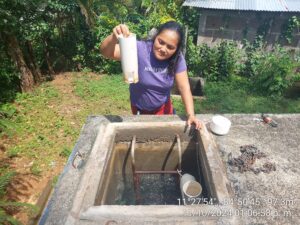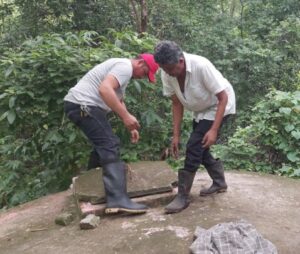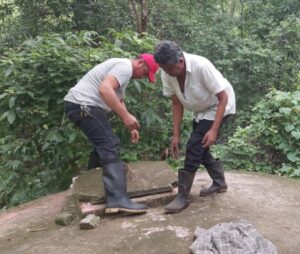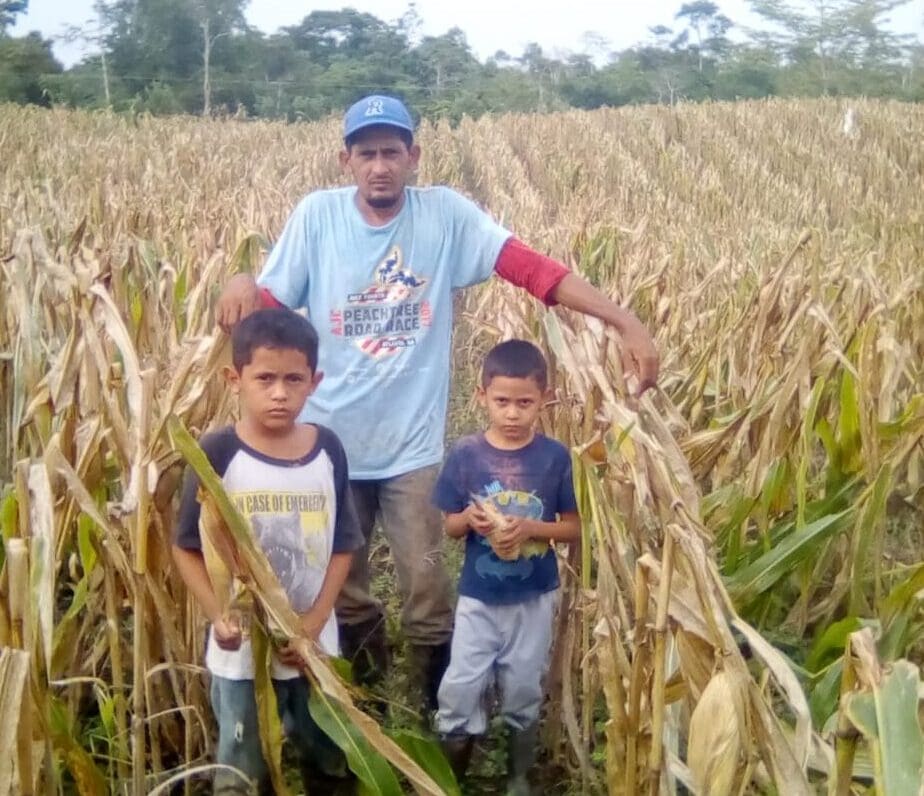
Pedro Combines Traditional Methods and New Techniques to Increase His Yields and Teach Other Farmers
By Rodolfo Ricardo Hernandez Navas – Agriculture Program Officer
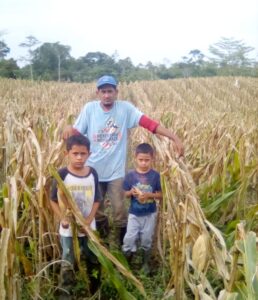
Pedro in his fields.
Pedro is a farmer from Nueva Guinea in the South Caribbean Coast Autonomous Region of Nicaragua. Since 2009, he has lived with his family in the community of El Espejo N ° 1 in Rio San Juan. Before moving to El Espejo, Pedro spent two years in Costa Rica working in the fields.
Pedro is responsible, hard-working, and honest. He is an example to the other members of the farming groups he leads, especially because he farms with an open-minded attitude. Pedro farms by using knowledge that was passed down to him by his grandparents, and he blends that knowledge with the training he’s acquired over the years from different governmental and non-governmental organizations, including Self-Help International.
Pedro first got involved with Self-Help International in 2017 when he learned about Self-Help’s Clean Water Program, and he is a volunteer on his local Water and Sanitation Committee (CAPS). In 2019, Pedro learned about Self Help’s Agriculture Program from Self-Help’s Clean Water Program Officer, Orlando Montiel Salas. During a clean water training session, Pedro saw a Self-Help demonstration plot and walked over to it to check it out.
Pedro wasn’t sure what he would find in the demonstration plot, and he was surprised to see so many corn stalks planted close together. He didn’t think the plants would yield much corn because they were planted so closely together. After the clean water training session wrapped up, Pedro went back to look at the demonstration plot and measure the distance between the corn plants.
“The next day, I proceeded to sow my field in the same way with the same distances between plants that Self-Help had in its plot,” Pedro said. “I selected seed from my harvest – just native seed that had been mixed with many varieties of corn in the field.”
Pedro’s seeds yielded a larger, taller plant variety than the one at Self-Help’s demonstration plot, and his corn didn’t produce much. He used that yield for his animals and continued to use the double-row technique he had seen in the Self-Help demonstration plot.
Later in 2019, there was another clean water program workshop, and Pedro once again saw Self-Help’s demonstration plot. He asked for someone to explain the double-row planting method, and the Clean Water Program Officer told him to contact Self-Help’s Nicaragua Director, Jorge Campos.
Pedro is Able to Be More Effective with Double-Row Planting
Once Pedro was able to connect with the Agricultural Program Officer, Rodolfo Navas, Rodolfo said that Self-Help could do a training in Pedro’s community about the double-row planting method using the Quality Protein Maize (QPM) seed variety, INTA-Nutrader. In this training, Self-Help could also establish a demonstration plot.
Pedro and other community farmers attended the training and listened to Self-Help’s recommendations.
“I realized that my previous attempts to do the double-row planting method didn’t work because I didn’t use a type of maize that could tolerate being planted so close together – the maize I used was too big,” Pedro said. “INTA-Nutrader is smaller and can tolerate being planted close together.”
The group of farmers proceeded to plant a 625-square-meter (one tarea) area with four pounds of maize on Pedro’s farm. That year in 2019, Self-Help donated four pounds of maize to every group member.
“These seeds served as an experiment for us because I had already established my 1.5 manzana 30 before planting these seeds,” Pedro said.
“The maize crop that I had established before working with Self-Help yielded 45 quintales of corn and the small plot that we sowed with the double-row technique yielded five and a half quintales of corn,” Pedro said.
“I would have harvested more, but in 2019 there were many pests in both the soil and leaves,” Pedro explained. “We were able to combat some of these pests with the help and suggestions of Self-Help’s Program Officer, who introduced us to new products that we had no idea were for sale in our local agro shops.”
“With the results I obtained in my 625-square-meter (one tarea) plot, I calculated that in one manzana I would obtain between 80 and 88 quintales of corn using the double-row planting technique and the INTA-Nutrader seed variety,” Pedro said – nearly double what he had yielded in the plot he had established without the INTA-Nutrader seed variety.
All group members received four pounds of corn from the organization and all planted the 625-square-meter plot, but most of the group did not see results since they did not attend to the field on time and pests affected all the plants. Of the group of 14, only four including Pedro were able to see results in the yields obtained. One farmer ate some of his yield and said the rest of the plot was stolen from him, but he estimated he could have harvested four quintales. The other two farmers obtained three and a half quintales in their parcels which had also been impacted by pests.
Helping to Teach Other Farmers about Double-Row Planting
“In 2021, I am continuing to provide an example to farmers in my community by carrying out this planting technique,” Pedro said.
“In establishing one manzana of maize on my farm, I divide it in the following way: one half a manzana with the double-row method using INTA-Nutrader and one half manzana planted using traditional methods,” Pedro said. “I do this to show my friends and other farmers who pass through my field to get to the nearest town. This has helped me to increase yields, make better use of my land, and spend less to produce. I’m able to provide work for others at harvest time, and I advise them to sow in this way so they can all benefit.”

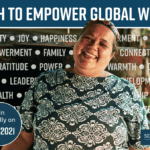 Previous Post
Previous Post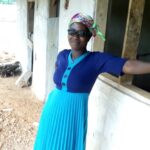 Next Post
Next Post